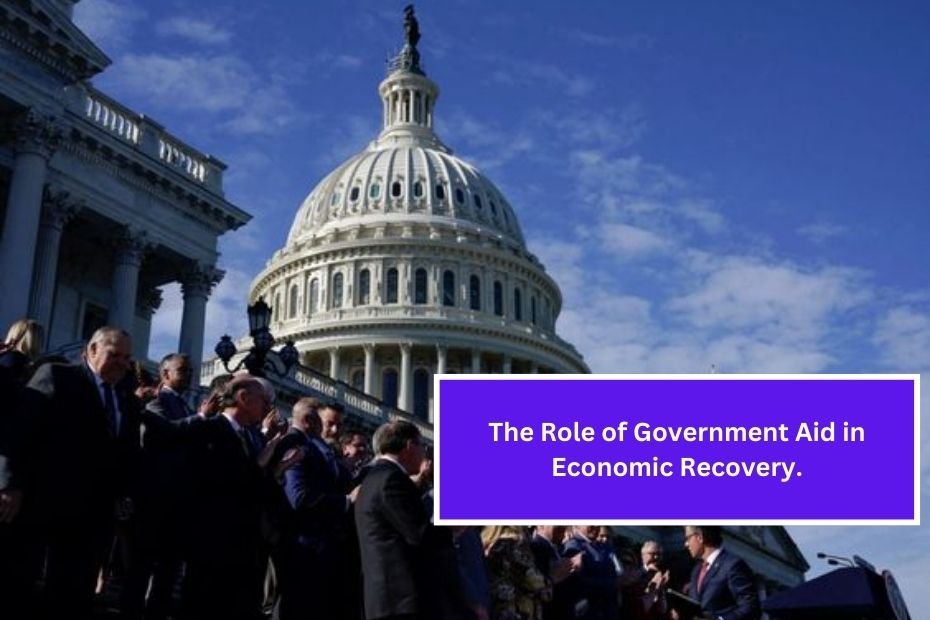In times of economic downturn, many people wonder how economies can recover and grow again. One key factor in this process is government aid. Government aid refers to financial support provided by the government to individuals, businesses, and organizations to help them during tough economic times. This article will explain how government aid plays a crucial role in economic recovery, why it is important, and the different types of aid available.
Introduction
Economic downturns can happen for various reasons, such as financial crises, natural disasters, or global pandemics. These events can lead to job losses, business closures, and a decrease in consumer spending. To combat these challenges, governments often step in to provide assistance. This aid can take many forms, including direct financial support, loans, grants, and tax relief. Understanding the role of government aid in economic recovery helps us appreciate how economies bounce back and become stronger.
1. Immediate Relief for Individuals
Unemployment Benefits
One of the most direct ways governments help during economic downturns is through unemployment benefits. When people lose their jobs, they may struggle to pay bills and buy necessities. Unemployment benefits provide temporary financial support to those who are out of work, helping them meet their basic needs.
For example, during the COVID-19 pandemic, many countries expanded their unemployment benefits to include more workers and increase the amount of aid. This support not only helped individuals but also kept money circulating in the economy. When people receive unemployment benefits, they are likely to spend that money on groceries, rent, and other essentials, which helps local businesses stay afloat.
Food Assistance Programs
In addition to unemployment benefits, governments often offer food assistance programs. These programs, such as food stamps or direct food distributions, help low-income individuals and families access nutritious food. By ensuring that people do not go hungry, these programs maintain public health and support the overall economy.
For instance, during economic crises, the demand for food assistance usually increases. Governments can respond by providing more resources to these programs, helping families get the food they need. This, in turn, supports local farmers and food suppliers, creating a positive ripple effect throughout the economy.
2. Support for Businesses
Small Business Grants and Loans
Small businesses are often the backbone of the economy. They create jobs and drive innovation. During economic downturns, many small businesses struggle to survive. To help them, governments may offer grants and low-interest loans. These financial aids provide the necessary funds for businesses to cover operational costs, pay employees, and adapt to changing circumstances.
For example, during the COVID-19 pandemic, various governments launched programs like the Paycheck Protection Program (PPP) in the United States. This initiative provided loans to small businesses to help them retain employees and keep their doors open. When businesses receive this aid, they can continue operating, which helps preserve jobs and stabilize the economy.
Tax Relief
Another way governments support businesses is through tax relief. This can include tax breaks, deferred payments, or reductions in tax rates. By lowering the tax burden, businesses can retain more of their earnings, which they can use to invest in their operations, hire employees, or pay existing staff.
Tax relief measures can also encourage consumer spending. When businesses have more money to work with, they may offer discounts or lower prices, making their products more attractive to consumers. This increased spending helps stimulate economic activity.
3. Infrastructure Investment
Creating Jobs
Government aid is not only about providing direct financial support; it can also involve investing in infrastructure. Infrastructure projects, such as building roads, bridges, and schools, create jobs and stimulate economic growth. When the government invests in these projects, it creates immediate employment opportunities, which helps reduce unemployment rates.
For instance, during economic recoveries, many governments launch large infrastructure initiatives. These projects not only create jobs for construction workers but also lead to long-term benefits for communities. Improved infrastructure can attract businesses and tourists, leading to further economic development.
Stimulating Local Economies
Investing in infrastructure has a positive ripple effect on local economies. When construction projects are underway, local suppliers, subcontractors, and service providers also benefit. This means that more businesses can thrive, leading to increased economic activity in the area.
Moreover, once the infrastructure is in place, it can enhance transportation, communication, and accessibility, making it easier for businesses to operate and for consumers to access goods and services. This long-term investment is vital for sustainable economic recovery.
4. Financial Stability and Confidence
Restoring Consumer Confidence
Government aid can help restore confidence among consumers and businesses. During economic downturns, uncertainty often leads to decreased spending. When the government takes action to support individuals and businesses, it signals that the economy will recover. This can encourage consumers to spend money and businesses to invest in growth.
For example, when people see that their government is providing unemployment benefits or business support, they may feel more secure about their financial situation. This renewed confidence can lead to increased consumer spending, which is essential for economic recovery.
Stabilizing Financial Markets
In addition to direct aid, governments can take measures to stabilize financial markets. This might involve providing emergency funding to banks or financial institutions. By ensuring that these institutions remain solvent, governments can prevent a credit crisis, which can have severe consequences for the economy.
Stabilizing financial markets is crucial because it allows businesses to access credit. When banks are healthy, they can lend money to companies that need funds for expansion or operations. This access to credit is vital for economic growth.
5. Social Programs and Community Support
Healthcare and Education
Government aid also extends to social programs, such as healthcare and education. During economic recoveries, investments in these areas are essential for long-term stability. Providing access to healthcare ensures that individuals remain healthy and can work, while education helps develop a skilled workforce.
For example, during economic recovery efforts, governments may invest in training programs for unemployed individuals. These programs equip people with new skills, making them more employable and helping them find jobs in growing industries. Investing in education and training is a smart way to build a stronger economy for the future.
Community Development
Community support programs, such as housing assistance and mental health services, are also important during economic recovery. These programs help individuals and families who may be struggling to cope with the impacts of economic downturns. By providing assistance in these areas, governments can promote social stability and reduce the risk of long-term poverty.
When communities receive support, they are better equipped to recover from economic challenges. A strong community can help individuals find jobs, access services, and build networks, all of which contribute to economic growth.
Conclusion
The role of government aid in economic recovery is multifaceted and vital. From providing immediate relief to individuals and supporting businesses to investing in infrastructure and community development, government aid plays a crucial role in stabilizing economies during tough times.
Understanding how government aid functions helps us appreciate its importance in creating resilient economies. When individuals and businesses receive the support they need, they can contribute to a more robust economy that benefits everyone.

